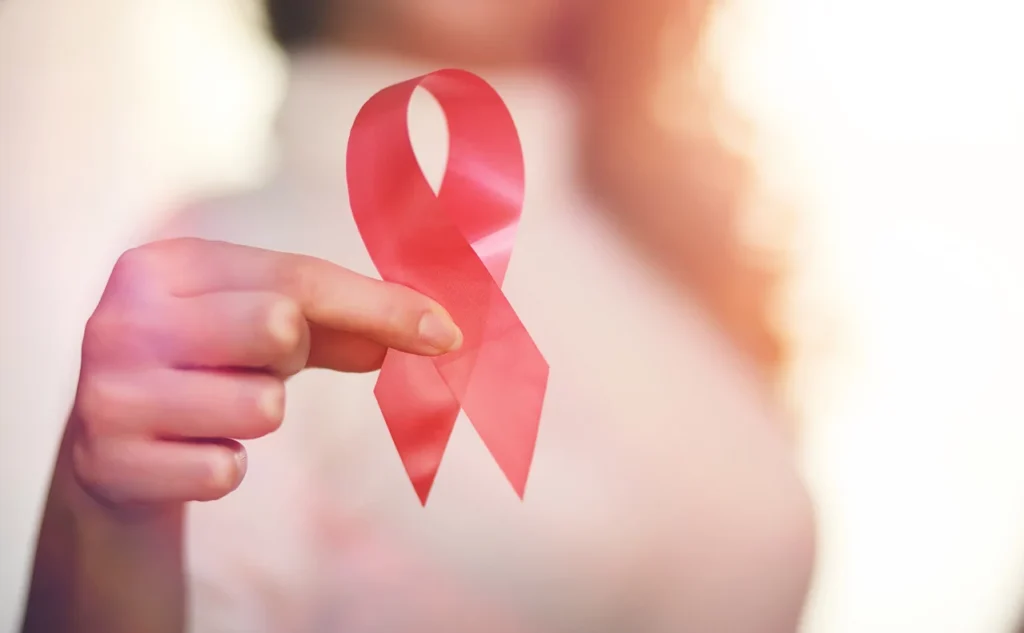HIV weakens the immune system and can exacerbate the impact of other illnesses and infections. If left untreated, HIV can progress to the advanced stage known as AIDS. It is important to note that transgender individuals face a higher risk of contracting HIV and may encounter challenges in accessing appropriate care.
According to reputable sources such as the Centers for Disease Control and Prevention (CDC) and the World Health Organization (WHO), transgender individuals are categorized as a high-risk group for HIV transmission. This is particularly evident among transgender women, who are disproportionately affected by HIV in certain regions, as highlighted by the WHO.
The spread of this virus can be significantly reduced through simple interventions, and timely treatment can save lives. However, transgender individuals often face health disparities that hinder their access to necessary support.
Various factors, such as violence, legal obstacles, social stigma, and discrimination, can impact the ability of transgender individuals to avail themselves of healthcare services and HIV-related support.
HIV statistics:
According to the Department of Health and Human Services, approximately 1.2 million people are currently living with HIV in the United States.
Data provided by the CDC reveals that nearly 1 million individuals in the U.S. identify as transgender. Among them, 9.2% are living with HIV, with HIV prevalence rates of 14.1% among transgender women and 3.2% among transgender men. In comparison, the estimated HIV prevalence for the general adult population in the U.S. is less than 0.5%.
Transgender People of Color experience a higher incidence of HIV, indicating the influence of intersecting forms of oppression and socioeconomic factors.
In 2019, 46% of transgender women who tested positive for HIV were Black or African American, while 35% were Hispanic or Latino, and 13% were white. Similarly, among transgender men testing positive for HIV, 41% were Black or African American, 26% were Hispanic or Latino, and 24% were white.
These numbers tend to be higher in large metropolitan areas. According to a 2021 CDC survey of 1,608 transgender women who underwent testing in seven major cities, 62% of black or African American individuals tested positive for HIV, as did 35% of Hispanic or Latinx individuals and 17% of white individuals.
Risk factors
There are various factors that can heighten the risk of HIV transmission among transgender individuals, while also restricting their access to high-quality treatment and prevention services. Some of these factors may encompass the following (according to a trusted source):
Healthcare discrimination
Transgender individuals frequently encounter high levels of discrimination in the realm of healthcare. This discrimination manifests in various ways, including healthcare professionals lacking the knowledge and skills to provide appropriate care for transgender individuals. Furthermore, it involves instances where healthcare professionals belittle or mistreat them, such as by refusing to use their correct names or pronouns. In some cases, healthcare professionals may even try to avoid treating transgender individuals altogether.
According to a report jointly conducted by the National Gay and Lesbian Task Force and the National Center for Transgender Equality, nearly 1 in 5 transgender individuals surveyed did not receive adequate medical care as a result of discrimination.
The report further highlighted that 28% of survey respondents reported postponing medical care due to discrimination, with an equal percentage of respondents indicating exposure to harassment within medical settings.
Lack of access to health information
Health discrimination can additionally create obstacles for transgender individuals in accessing accurate and high-quality information pertaining to health, HIV prevention, and HIV care. According to a survey conducted in 2020, it was discovered that 65% of transgender women are unaware of preexposure prophylaxis (PrEP), which is a crucial HIV prevention treatment.
Reduced access to testing
Transgender individuals often encounter challenges in accessing HIV testing, which can lead to a lack of awareness regarding their own HIV status. Consequently, they may not take the necessary precautions to prevent the transmission of the virus to others.
Moreover, transgender people frequently experience difficulties related to unemployment, housing discrimination, and poverty. These circumstances make it more arduous for them to locate and afford testing and care services.
High-risk behavior
Transgender individuals may exhibit a higher likelihood of engaging in behaviors that heighten the risk of HIV transmission. For instance, available data indicates that transgender women may have a greater propensity compared to other populations to engage in injectable drug use or unprotected sexual activity.

Sociological factors, including discrimination, play a substantial role in influencing such risk-taking behaviors. Stigma, social exclusion, and economic vulnerability can contribute to the adoption of drug use, involvement in sex work, and other behaviors that elevate the risk of HIV transmission. Social marginalization, such as pressure from sexual partners, can also pose challenges for certain transgender individuals in terms of consistent condom or barrier method usage during sexual encounters.
Injecting hormones
A significant number of transgender individuals incorporate hormone therapy as part of their gender-affirming treatment, often involving the use of injectable hormones. However, without adequate counseling regarding safe injection practices, they may be susceptible to HIV transmission, primarily through the sharing or use of unsterilized needles.
Research indicates that individuals undergoing gender-affirming hormone therapy can safely utilize PrEP medications for HIV prevention and antiretroviral medications for managing the virus. Experts have not identified any interactions between these various drugs, affirming their compatibility for simultaneous use.
Prevention Tips
Implementing the following strategies (according to a trusted source) can effectively decrease the risk of HIV transmission or contraction among transgender individuals:
- Minimizing and improving the use of injectable drugs: Using prescribed injectable drugs increases the risk of HIV exposure. It is crucial to use a new needle for each injection and never share needles. When taking gender-affirming hormones, consult a healthcare professional about safe injection practices. Many clinics providing such care can offer on-site hormone injections.
- Limiting the number of sexual partners: Reducing the number of sexual partners significantly decreases the risk of HIV transmission.
- Practicing safer anal sex: Receptive anal sex carries a high risk of HIV transmission. Correct and consistent use of condoms effectively reduces the risk of HIV transmission.
- Employing barrier methods during sexual contact: Fear of rejection and impaired judgment due to substance use or other factors can lead to engaging in sexual contact without using condoms or other barrier methods. However, utilizing these methods is essential for preventing HIV transmission.
- Taking preventive medications: Taking preexposure prophylaxis (PrEP) before engaging in sexual contact can help reduce the risk of contracting HIV.
While HIV has no cure, it is treatable (according to a trusted source). Appropriate treatment can save lives, improve quality of life, and reduce the risk of transmitting the virus to others. Regular HIV testing is advisable, particularly if there is a suspicion of exposure to the virus.
How to access testing and treatment
Although data on transgender access to HIV treatment and testing services are limited, available information indicates that transgender individuals generally face greater challenges in accessing these services compared to cisgender individuals.
Individuals with insurance coverage may have the option to undergo free or low-cost HIV testing through healthcare professionals as part of their annual physical examinations. Another convenient option is ordering self-test kits online.
For individuals without insurance and financial means to afford testing, reaching out to local free clinics can be beneficial. Some health departments and organizations such as Planned Parenthood offer free or low-cost HIV testing services. Additionally, HIV.gov provides a comprehensive list of free testing sites that individuals can refer to for accessible testing options.
Potential barriers to care
Transgender individuals encounter multiple barriers that hinder their access to necessary healthcare services. These barriers, as indicated by a trusted source, include:
- Discrimination from medical professionals: Transgender individuals often face discrimination from healthcare providers, which can impede their ability to receive appropriate care.
- Lack of knowledge among medical professionals: Many healthcare providers have limited understanding of transgender health or the specific HIV risks faced by transgender individuals, resulting in inadequate care.
- Financial difficulties and limited access to low-cost care: Transgender individuals may struggle to afford healthcare or find affordable care options, limiting their ability to access necessary services.
- Shame or embarrassment related to transgender identity: Feelings of shame or embarrassment about their transgender identity may prevent individuals from seeking or disclosing their healthcare needs.
- Unemployment and homelessness: Transgender individuals are more likely to experience unemployment and homelessness, which significantly hampers their ability to access consistent healthcare.
- Mental health issues: Discrimination and exclusion can lead to mental health challenges among transgender individuals, further impacting their overall well-being and healthcare-seeking behavior.
- Discrimination in insurance coverage and healthcare: Transgender individuals often face discrimination when it comes to insurance coverage and healthcare, which can restrict their access to necessary services.
- Fear of violence: Transgender individuals may fear violence or negative consequences if they disclose their transgender identity or HIV-positive status, leading to reluctance in seeking healthcare services.
Summary
Transgender individuals face an elevated risk of HIV contraction and often encounter barriers that impede their access to treatment, primarily due to health inequities. However, by addressing and eliminating these barriers while enhancing the availability of interventions and treatments, we can significantly reduce the transmission of HIV and save lives. It is crucial to prioritize efforts that promote equity, accessibility, and inclusivity in HIV prevention and treatment services for transgender populations. By doing so, we can improve health outcomes and contribute to a more equitable and inclusive healthcare system.









